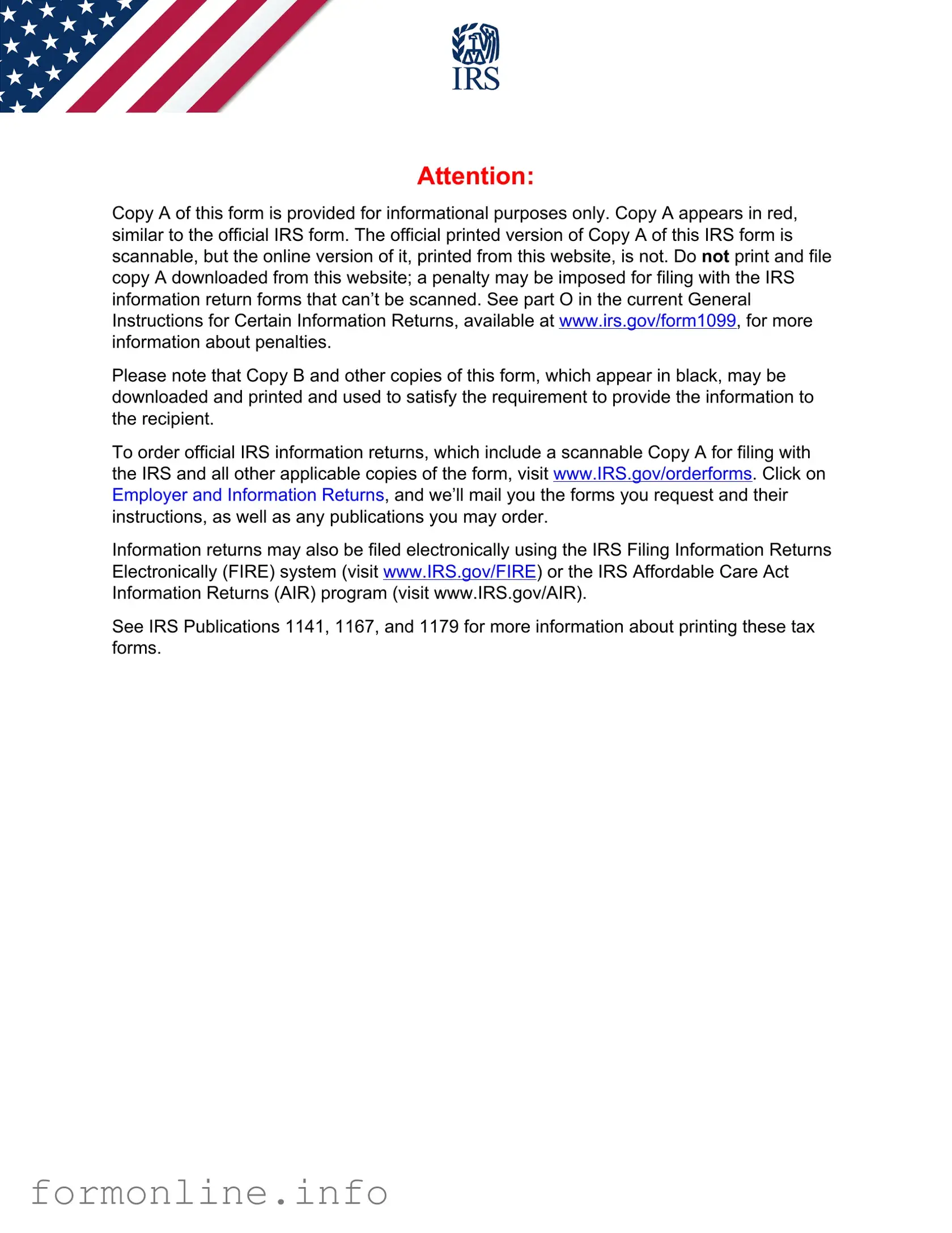The 1099-MISC form is similar to the 1099-NEC form in that both are used to report income paid to non-employees. The 1099-MISC is primarily used for various types of payments, including rents, prizes, and awards, while the 1099-NEC specifically focuses on nonemployee compensation. Each form requires the payer to provide details such as the recipient's taxpayer identification number (TIN) and the amount paid. However, the distinction lies in the fact that the 1099-NEC was reintroduced in 2020 specifically to streamline reporting of nonemployee compensation, which was previously reported on the 1099-MISC.
The 1099-K form is another document that shares similarities with the 1099-NEC. This form is used to report payment card and third-party network transactions. Like the 1099-NEC, it is issued to recipients who have received payments totaling over a certain threshold, typically $20,000 and 200 transactions. The 1099-K also requires the reporting of TINs and payment amounts, making it essential for tracking income from electronic payment platforms. Both forms aim to ensure that the IRS receives accurate information about income earned outside of traditional employment.
The W-2 form is similar in that it also reports income, but it is specifically for employees rather than independent contractors. Employers use the W-2 to report wages, tips, and other compensation paid to employees, along with the taxes withheld. In contrast, the 1099-NEC does not involve tax withholding, as it is intended for nonemployee compensation. Both forms require the payer to report the recipient's TIN and provide a summary of earnings, but the W-2 includes additional information regarding Social Security and Medicare taxes.
The 1099-INT form is used to report interest income, which can also be similar to the 1099-NEC in terms of providing information to the IRS about income earned. Financial institutions use the 1099-INT to report interest payments made to individuals, while the 1099-NEC reports payments made to independent contractors. Both forms require the inclusion of the recipient's TIN and the amount paid, but they serve different purposes in terms of the type of income being reported.
When dealing with property transfers, understanding the implications of a quitclaim deed can be vital. For a comprehensive overview of the legal framework, you can explore our detailed guide about the Quitclaim Deed options and requirements in Florida.
The 1099-DIV form is used to report dividends and distributions from investments, which makes it similar to the 1099-NEC in that both forms track income received by individuals. Corporations issue the 1099-DIV to shareholders who have received dividends, while the 1099-NEC is issued to nonemployees for compensation. Each form necessitates the reporting of the recipient's TIN and the amounts received, but they cater to different types of income sources.
The 1099-R form reports distributions from retirement accounts, making it another document akin to the 1099-NEC. This form is issued to individuals who have received distributions from pensions, annuities, or retirement plans. Similar to the 1099-NEC, the 1099-R requires the reporting of the recipient's TIN and the amount distributed. However, the 1099-R focuses specifically on retirement income, while the 1099-NEC is concerned with payments made for services rendered by nonemployees.
The 1099-G form is used to report certain government payments, including unemployment compensation and state tax refunds. Like the 1099-NEC, it is issued to individuals who have received payments, requiring the inclusion of the recipient's TIN and the payment amount. Both forms serve to inform the IRS about income received by individuals, but the 1099-G is specifically focused on government-related payments.
The 1099-C form reports cancellation of debt, which can be similar to the 1099-NEC in that both forms track income that may not be immediately apparent to the taxpayer. Creditors issue the 1099-C when a debt of $600 or more is forgiven, requiring the reporting of the debtor's TIN and the amount of debt canceled. While the 1099-NEC focuses on payments for services, the 1099-C highlights financial relief that may have tax implications for the recipient.
The 1099-S form is used to report proceeds from real estate transactions, which can also relate to the 1099-NEC in terms of reporting income generated from business activities. The 1099-S is issued when real estate is sold, requiring the reporting of the seller's TIN and the gross proceeds. Both forms are crucial for ensuring accurate income reporting to the IRS, but they pertain to different types of transactions.
The 1099-LTC form reports long-term care benefits, which can be similar to the 1099-NEC in that both forms are used to report payments made to individuals. The 1099-LTC is issued to individuals who receive payments from long-term care insurance policies. While both forms require the reporting of the recipient's TIN and the amount received, the 1099-LTC specifically focuses on insurance benefits, whereas the 1099-NEC pertains to compensation for services rendered.






 CORRECTED (if checked)
CORRECTED (if checked)
